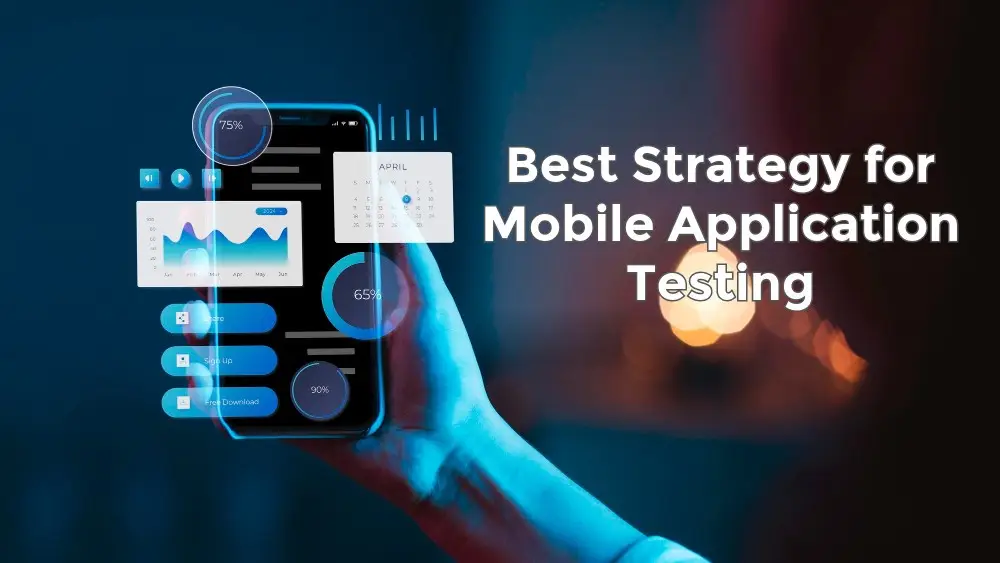The best strategy for mobile application testing has evolved dramatically, driven by AI integration, sophisticated user expectations, and complex app architectures. Whether you’re launching a fintech app or building the next social media platform, your testing approach can make or break user retention.
Why Mobile Testing Strategy Matters More Than Ever
Your app’s success isn’t just about cool features – it’s about flawless execution. With 88% of mobile app users abandoning applications that experience performance issues or contain software bugs, testing isn’t optional anymore.
The stakes are higher. Users expect apps that work seamlessly across foldable screens, integrate with IoT devices, and handle AI-powered features without missing a beat. Your testing strategy needs to match this complexity.
Essential Components of Modern Mobile Testing Strategy
AI-Powered Test Automation
AI-driven automation is making the testing process much faster and efficient, with approximately 72% of corporate entities expected to embrace AI-based testing methodologies. These tools analyze test data, predict failures, and adjust scripts when UI changes occur.
Key Benefits:
- Self-healing test scripts that adapt to minor code changes
- Predictive failure analysis before bugs surface
- Automated visual testing across different screen sizes
Popular AI testing tools include Testim’s AI-powered locators and automated test generation platforms that learn from user behavior patterns.
Real Device Testing vs. Emulators
While emulators are cost-effective for initial testing, real devices capture hardware-specific issues like battery usage and sensor performance, which emulators often miss. The best strategy combines both approaches:
Emulator Testing for:
- Early development cycles
- Quick smoke tests
- Cost-effective initial validation
Real Device Testing for:
- Performance validation
- Hardware-specific features
- Final user acceptance testing
Cloud-based device farms like BrowserStack and LambdaTest provide access to hundreds of real devices without infrastructure overhead.
Security-First Testing Approach
Mobile app attacks jumped to 83% in 2025, up from 65% the year before, making security testing non-negotiable. Your strategy should include:
- Penetration testing for authentication flows
- Data encryption validation
- GDPR and CCPA compliance checks
- API security testing
Framework Selection Guide
Cross-Platform Champions
Appium remains the gold standard for cross-platform testing. It allows developers to automate the testing of native or hybrid iOS and Android applications using the same API, supporting multiple programming languages including Java, Python, and JavaScript.
WebdriverIO offers a cleaner syntax for JavaScript teams, wrapping Appium in a more maintainable format while providing excellent CI/CD integration.
Platform-Specific Powerhouses
iOS Testing: XCUITest provides the tightest integration with Xcode and Swift, offering superior performance for native iOS testing.
Android Testing: Espresso excels for Android-specific testing with fast execution and reliable synchronization with app UI.
| Framework | Platform | Best For | Learning Curve |
|---|---|---|---|
| Appium | Cross-platform | Teams testing multiple platforms | Medium |
| XCUITest | iOS only | Native iOS apps with source access | Low |
| Espresso | Android only | Fast Android UI testing | Low |
| WebdriverIO | Cross-platform | JavaScript teams | Medium |
Performance Testing
Modern performance testing goes beyond basic load testing. Performance and load testing ensure that an application can handle a high volume of users and maintain speed and responsiveness. Focus areas include:
- 5G network optimization
- Battery usage under different conditions
- Memory management across device variations
- Real-world network simulation (3G, WiFi, poor connectivity)
Tools like Maestro provide declarative testing that’s language-agnostic, making performance testing accessible to non-technical team members.
Building Your Testing Pipeline
Shift-Left Testing Integration
Shift-left testing, or testing early in the development lifecycle, is becoming a standard practice as agile and DevOps methodologies take center stage. Integrate testing into your CI/CD pipeline with:
- Automated unit tests on every commit
- UI regression tests on pull requests
- Performance benchmarks in staging environments
Crowdsourced Testing Benefits
Remote testing teams offer a potent mix of comfort and technology, allowing managers to conduct tests with larger groups of participants while reducing overhead costs. Platforms like Ubertesters provide global testing coverage with real users in diverse environments.
Cost-Effective Testing Strategies
Smart testing doesn’t mean expensive testing. Here’s how to maximize ROI:
Free Tools to Start With:
- Selenium with Appium for basic automation
- Android Studio’s built-in testing tools
- Xcode’s XCUITest framework
Gradual Investment Path:
- Start with open-source frameworks
- Add cloud device testing for broader coverage
- Integrate AI-powered tools for complex scenarios
Common Testing Pitfalls to Avoid
- Over-relying on emulators for final validation
- Ignoring network conditions that users actually experience
- Testing only happy paths instead of edge cases
- Skipping accessibility testing (critical for compliance)
- Not testing app store deployment processes
Future-Proofing Your Testing Strategy
The mobile landscape keeps evolving. Prepare for:
- IoT Integration Testing: By 2025, there will be approximately 27 billion connected IoT devices
- AR/VR Testing: New interaction models require specialized testing approaches
- Foldable Device Support: Screen transitions and multi-window scenarios need validation
Measuring Testing Success
Track these metrics to optimize your strategy:
- Defect Detection Rate: Bugs found in testing vs. production
- Test Coverage: Percentage of code/features tested
- Mean Time to Recovery: How quickly you fix critical issues
- User Satisfaction Scores: App store ratings and user feedback
Conclusion
The best strategy for mobile application testing isn’t one-size-fits-all. Start by assessing your current approach, identify the biggest gaps, and gradually implement AI-powered tools and real device testing.
Focus on building a testing pipeline that grows with your app’s complexity. Whether you’re a startup validating your MVP or an enterprise scaling globally, the right testing strategy ensures your users get the flawless experience they expect.
Ready to level up your mobile testing game? Start with one framework that matches your tech stack, then expand your coverage as your confidence and budget grow.




